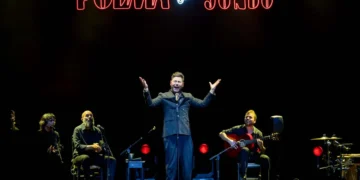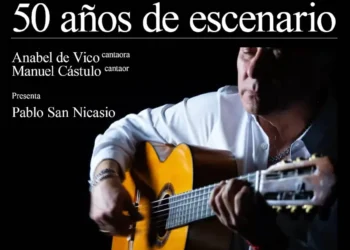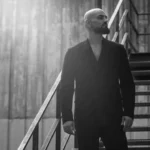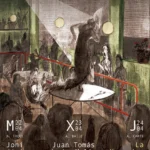|
|
|
by Estela Zatania
With 2009 about to begin, it’s possible to talk about the state of flamenco in the first decade of the new millennium. If a century ago the recording industry was in diapers and just learning to crawl, today, it has reached an astonishing level of sophistication, with sound technicians, producers, click-tracks and samplers, just when the flamenco fan in the street has the technical ability to acquire music free of charge, making live performances an important source of income and means of dissemination. PRIZES AND SUCCESSES As far as cante, this was without a doubt the year of Miguel Poveda. Winner of last year’s Premio de la Música, he saw his popularity skyrocket throughout the year thanks to numerous performances at the most important festivals, both home and abroad, and even the most hard-nosed fans succumbed to his talent and charm The year ended with the good news that dancer Manolo Sanlúcar, each celebrating the fiftieth year of their careers. Cepero received the Demófilo prize, and Seville’s Bienal de Flamenco was dedicated to Sanlúcar. In Granada, veteran dancer Manolete received the Medalla de Oro al Mérito for lifelong achievement. FAREWELLS…
CATALUÑA, BALEARES, CASTILLA Y LA MANCHA… Four noteworthy events in Cataluña underlined the growing importance of this region in the world of flamenco. In January, the Festival Flamenco del Palau de la Música, with the stellar performance of Enrique Morente, in May, Flamenco a Nou Barris with Duquende heading the bill, the fifteenth Festival Flamenco Ciutat Vella with Terremoto and Rafaela Carrasco and the Festival 30 Nits de Sabadell offered an excellent assortment of performances.
In the autonomous region of Castilla y La Mancha, the Fosforito flamenco club of Puertollano continued to defend traditional flamenco with their festival Puerta Flamenca, and the second edition of their cante contest “Puerta de Alcudia” which crowned young singer Antonio Flores “Rubio de Pruna”. In September, the Festival Nacional de Arte Flamenco “Ciudad del Vino” was held in Valdepeñas. FRANCE, JEREZ, LA UNIÓN… The schedule of the most important festivals began, as it does each year, with the Festival Flamenco de Nîmes, which brought together the youth and the years of experience of Rocío Mollina and Chano Lobato, in addition to the outstanding performances of José Antonio Rodríguez and Miguel Poveda among many others. Festival de Jerez celebrated its twelfth edition with some of the biggest current stars of flamenco dance such as Antonio el Pipa, Andrés Marín, Rafael Amargo, Eva Yerbabuena, Manuela Carrasco, Israel Galván and El Güito in the ample program. The works “Sin Fronteras” of Miguel Poveda, “Mujeres” and “Flamenco XXI. Ópera, Café y puro” of Estévez and Paños were voted by critics to be the highlights of the festival. Noteworthy in the summer season was the twentieth edition of Mont-de-Marsan festival in France, with Eva Yerbabuena, Rosario Toledo, La Susi, Niño de Pura & Manolo Franco and dancer Juan de Juan among others, as well as the mega-production “De la Mar al Fuego” with more than thirty artists. As happens each year in August, the small eastern town of La Unión became the center of the flamenco world with its Festival de Cante de las Minas and associated contest, which in this edition gave the coveted Lámpara Minera to young Rocío Márquez, and the Desplante, the highest dance award, to Alfonso Losa. THE BIG BIENAL, THE SMALL ONE AND TWO NEW FESTIVALS… Bienal de Flamenco de Sevilla, which for its fifteenth edition offered various debuts including those of Rosario Toledo and Ana Salazar, Segundo Falcón and Paco Jarana, Manolo Sanlúcar, Manuel Liñán, Olga Pericet and Marco Flores, Rafaela Carrasco and Rocío Molina. The inaugural gala, a tribute to the career of Manolo Sanlúcar, took place in the streets of Seville with thousands of spectators. The Giraldillo awards for cante, dance and guitar went to Esperanza Fernández, Israel Galván and Juan Carlos Romero respectively. We also were able to report on the “other” Bienal, the one of Holland, which this year celebrated its second edition. In addition to a complete program of parallel activities, artists such as Miguel Poveda, Diego Carrasco, el Pele, Andrés Marín and Niño Josele offered their performances to audiences in Amsterdam, Utrecht and Rotterdam. In 2008, we received the news that the mega festival Málaga en Flamenco would be discontinued after only two editions, but two new events came into being. Alcalá de Guadaíra inaugurated its Festival Flamenco Vaivenes Flamencos, and in Arcos de la Frontera, the first Flamenco en Escena was held, both initiatives focusing on the new tendencies in flamenco. MADRID… festival Caja Madrid programmed a string of celebrities that included Capullo de Jerez, El Lebrijano, El Torta, Arcángel, El Cabrero, Mayte Martin and Enrique Morente among others. In dance, flamenco fans in the nation’s capital were able to enjoy the most successful show of the year, “Mujeres”, Mario Maya’s creation representing three generations of dancers with Rocío Molina, Belén Maya and Merche Esmeralda, a show that went on to New York, Miami, Washington, London and Paris, as well as major theaters throughout Spain and the rest of Europe. In the month of May, at various locations around Madrid and surrounding towns, the third Suma Flamenca festival was held. In April, also in Madrid, the Festival Flamenco por Tarantos “A Almería” took place, and in June, the ninth edition of the Festival Flamenco Pa’ Tos, promoted by the Gomaespuma duo. The Jornadas Flamencas of Fuenlabrada brightened the Madrid spring, the series Veranos de la Villa gave life to languid August nights in the capital, and the year ended with the Jornadas Flamencas de La Fortuna in Leganés, an impressive collection of events that featured virtually all the current stars of flamenco. ANDALUSIA… While some people still argue for the disappearance in Andalucía of the classic summer festivals, these events continue to be an important focal point for flamenco followers to enjoy sultry evenings filled with cante. The Jueves Flamencos of Cádiz and the Viernes Flamencos of Jerez offered many options for the summer season, in addition to Almería with its Festival Flamenco, the venerable Potaje de Utrera, this year dedicated to Isabel Pantoja, the Festival “La Yerbabuena” in Las Cabezas, dedicated to Cristina Hoyos and the Gazpacho Andaluz in Morón de la Frontera. In Granada, the series “Veranos de Flamenco en el Corral del Carbón” gave many young artists the opportunity to show what they could do, and in Seville, Cajasol continued to present their Jueves Flamencos from autumn through spring, with a diverse program of cante, dance and guitar. As is only fitting, we ended the month of December with the traditional zambomba celebrated each year at the Villamaría Theater in Jerez. LOOKING TOWARDS 2009… Cataluña is starting the year full speed ahead with the festival F for Flamenco, with Dorantes, Poveda, El Pele and Arcángel, with the clear goal of presenting quality flamenco. In Madrid we are all anxiously awaiting the program of the Festival Caja de Madrid which for the first time leaves the Teatro Albéniz to be held at the new Teatros del Canal, although we don’t yet have the exact dates. Our agenda already includes the program of the Festival of Nimes in January, the so-called Gira del Norte programmed by Flamenco de Hoy in cities like Valladolid, Logroño, Baracaldo, Vitoria…and now Santander with Miguel Poveda, closing with Manolete in Logroño. Other upcoming events include the Flamenco Festival USA and London to be held in February and March, the Jornadas Flamencas of Fuenlabrada (Madrid) which this year has been expanded to last two weeks, the Toulouse Festival in France, the concert “Las 10 de Paco” on January 31st at the Maestranza in Sevilla, the revival of the “Festival Andalucía Flamenca” to be held at Madrid’s National Auditorium and promoted by the Agencia Andaluza del Flamenco, and above all, the much-awaited Festival de Jerez. On the flamenco agenda we will continue to include the various shows and festivals as they are announced, so as not to miss out on anything. |





























